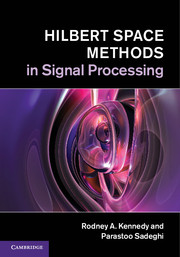1 - Introduction
from I - Hilbert Spaces
Published online by Cambridge University Press: 05 March 2013
Summary
Introduction to Hilbert spaces
The basic idea
Hilbert spaces are the means by which the “ordinary experience of Euclidean concepts can be extended meaningfully into the idealized constructions of more complex abstract mathematics” (Bernkopf, 2008).
If our global plan is to abstract Euclidean concepts to more general mathematical constructions, then we better think of what it is in Euclidean space that is so desirable in the first place. An answer is geometry — in geometry one talks about points, lines, distances and angles, and these are familiar objects that our brains are well-adept to recognize and easily manipulate. Through imagery we use pictures to visualize solutions to problems posed in geometry. We may still follow Descartes and use algebra to furnish a proof, but typically through spatial reasoning we either make the breakthrough or see the solution to a problem as being plausible. Contrary to any preconception you may have, Hilbert spaces are about making obtuse problems have obvious answers when viewed using geometrical concepts.
The elements of Euclidean geometry such as points, distance and angle between points are abstracted in Hilbert spaces so that we can treat sets of objects such as functions in the same manner as we do points (and vectors) in 3D space. Hilbert spaces encapsulate the powerful idea that in many regards abstract objects such as functions can be treated just like vectors.
To others, less fond of mathematics, Hilbert spaces also encapsulate the logical extension of real and complex analysis to a wider sphere of suffering.
Information
- Type
- Chapter
- Information
- Hilbert Space Methods in Signal Processing , pp. 2 - 23Publisher: Cambridge University PressPrint publication year: 2013
